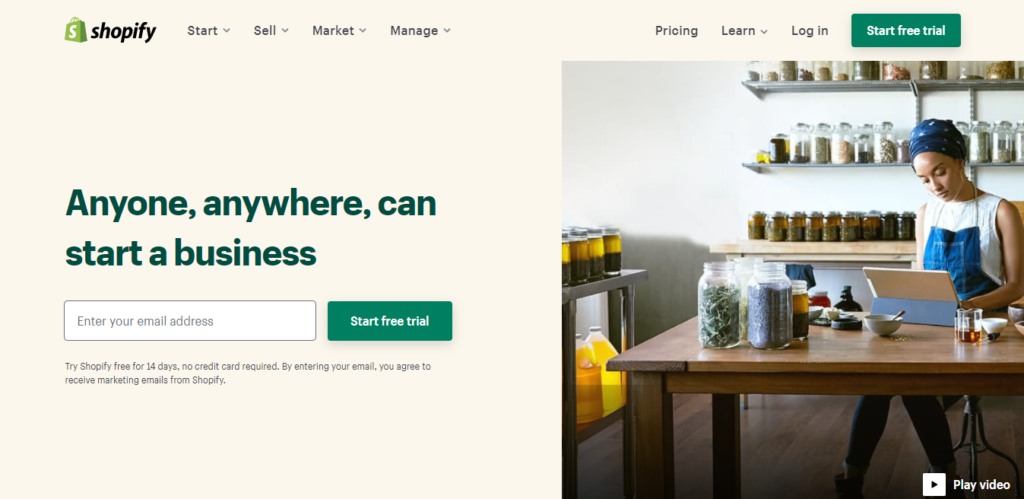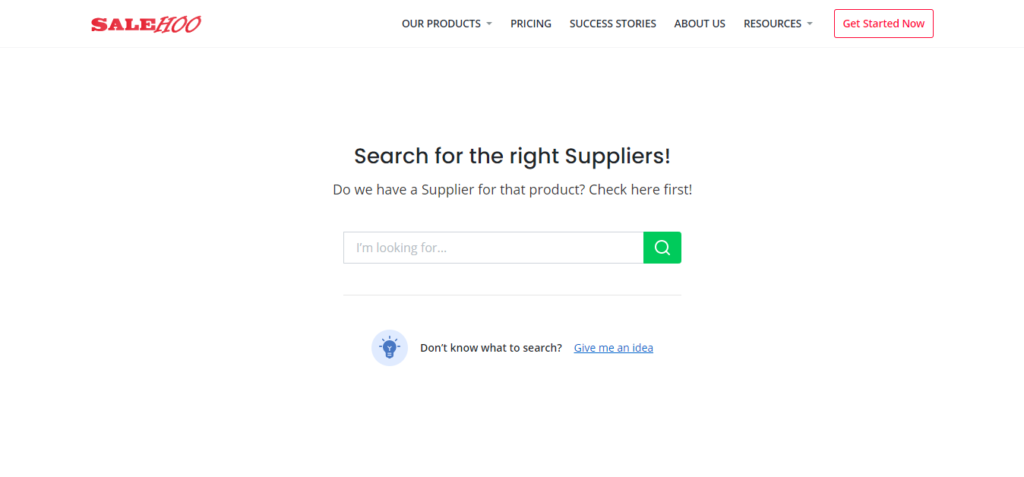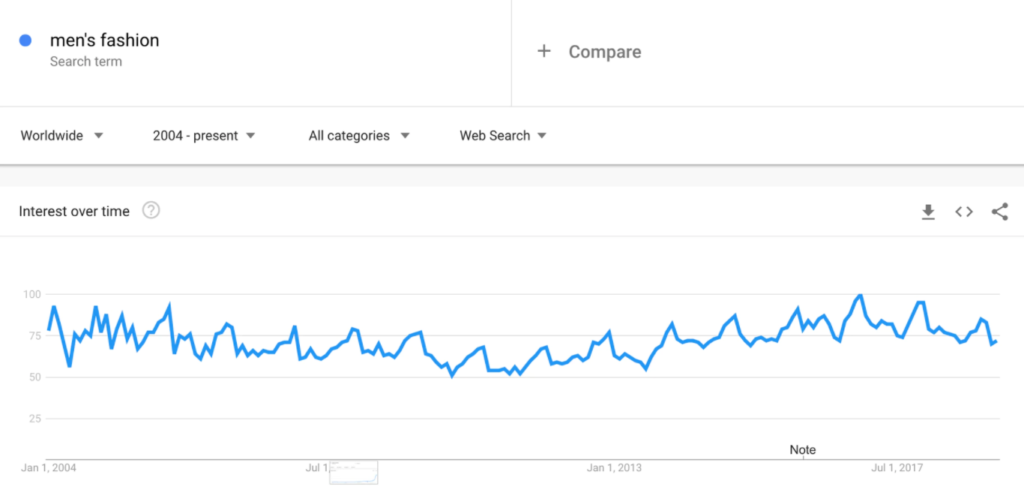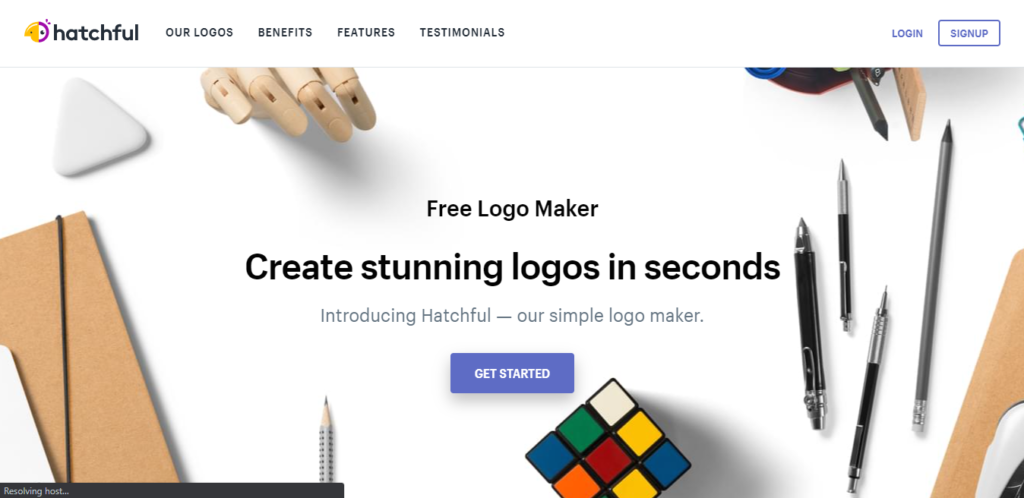There are many great reasons to get into the clothing business.
The apparel market is lucrative, and there is high potential to win financial independence.
A clothing business can also be a great avenue to indulge your creativity and build a brand.
But the route you should take when starting your clothing business isn’t exactly obvious.
In this guide, I’ll take you step-by-step on how to start a new clothing business.
The Easy Parts of Starting a Clothing Business
Starting a clothing business isn’t necessarily a walk in the park. But some aspects of starting are a lot easier than many people think. For example, creating an online store may sound daunting. But you can set up an operational online store in a day. Plus, you don’t even need any coding experience.
Shopify, an ecommerce platform, lets you easily build an online storefront in just a few steps. And you can migrate your brick-and-mortar store online without missing a beat (if you have one). Shopify also comes with built-in tools to help you develop and execute digital marketing campaigns with zero prior digital marketing experience.

If you’ve never created a business plan before, this task can be intimidating. But, organizations such as the U.S. Small Business Association (SBA) offer comprehensive resources to help you create a business plan. We’ll cover the details of making your business plan in another section.
Finding a clothing supplier to work with can also be tricky. But, again, there are resources to help you with this step. If you don’t know where to start finding a supplier, there are plenty of free online directories you can use. Some of these directories even vet the suppliers before adding them to the marketplace.

Alternatively, online marketplaces like AliExpress and Alibaba help you connect directly with apparel manufacturers in China. Many retailers prefer sourcing from China because it’s often cheaper than partnering with US-based manufacturers.
The Difficult Parts of Starting a Clothing Business
Although not impossible to accomplish, some parts of starting a clothing business are more challenging. To begin, you will need to conduct market research. This market research will help you analyze the competition, figure out product pricing, identify market gaps and business opportunities, and learn about market saturation.
A tool like Google Trends is a great launching pad. This tool can give you initial insights into what’s popular and the trends for your chosen apparel. But you’ll need to dig a little deeper to fully understand your market. The apparel business is fiercely competitive, and an accurate understanding of your niche gives you the best chance of success.

You may need to take different approaches, including online surveys, phone interviews, in-person interviews, focus groups, and field research. This process can be labor-intensive, but the reward is relevant data that accurately reflect your customer base and particular business. You can then use this data to make better business decisions and trend predictions.
Here’s how to start a clothing store step-by-step.
Step 1- Choose a Clothing Niche
It can be tempting to offer as many different types of apparel as you can think of. But this strategy can be counterintuitive on many fronts. So, instead, settling on a clothing niche will help you focus all your efforts on a specific area, increasing your ROI (return on investment).
Your niche will help you create a business plan, identify gaps in the market, discover your target audience, and limit your competition. To narrow down your niche:
Consider Your Skills and Passions
Starting any business is challenging. There will be ups and downs. Passion is a significant factor that will help you to push through the more difficult stretches. Think about your passions and interests. These may be for menswear, women’s clothing, urban fashion, or pop culture. The apparel market is very diverse. You should be able to find a niche relating to your passions.
Additionally, your skills will give you an edge as a new entrepreneur. Your customers, specifically those passionate about your products, are very knowledgeable. They’ll be able to tell if you are not skilled at your craft right off the bat.
Some popular niches ideas to get you started include:
- Pop culture apparel
- Sportswear
- Sustainable fashion
- Vintage clothing
- Genderless fashion
- Athleisure clothing
- Sleepwear
- Men’s dress clothes
- Women’s dress clothes
- Lingerie
Choose Your Type of Clothing
You won’t be able to capture the entire apparel market. It is expensive, if not impossible. Narrow down the type of clothing you’ll offer. You can start with just a few options. There will always be room to scale up as your operation grows, and you’ll be able to add more products and capture a larger market share.
Some of the types of clothing to consider include:
- Long sleeve shirts
- Short sleeve shirts
- Sweatshirts
- Underwear
- Socks
- Pants
- Leggings
Check Your Niche’s Earning Potential
Another reason to do market research is to find out your niche’s earning potential. Some niches tend to be more lucrative than others. Ultimately, you are getting into business to make money. Therefore, you want to make sure that your niche isn’t so obscure that you cannot reasonably expect to make good money.
Step 2 – Choose an Ecommerce Platform
Usually, it might be premature to create your online storefront at this stage. But given Shopify’s features, this is an excellent time to create one. You’ll need some of these features in the following steps.
Choose Your Plan
I highly recommend Shopify if you’re just starting. This ecommerce platform is straightforward to use. You can set up your store from scratch, including creating an online storefront and creating designs for your clothes. Shopify offers three pricing tiers. These include:
- Basic Shopify: $29 per month
- Shopify: $79 per month
- Advanced Shopify: $299 per month

The Basic Shopify plan is good enough if you’re just starting. Some of the features include:
- Online store, including an ecommerce website and blog
- Two staff accounts
- Unlimited products
- Sales channels
- Up to four inventory locations
- Discount codes
- Free SSL certificate
Step 3 – Choose Your Business Model
There are a couple of ways to go about setting up your clothing business. The option you choose largely depends on the type of clothing business you want to create. Some business models are easier to execute than others. Also, each business model has its advantages and drawbacks. Consider each option carefully before moving forward.
Print-on-Demand Business Model
Print-on-demand (POD) is a popular clothing business model for people looking for a low barrier to entry. This model is also the cheapest way to get into the clothing business. Here, a print-on-demand company prints your design and logo onto blank apparel. Many companies also store your inventory and fulfill orders for you. You do not need to hold inventory with this model.
Popular POD services include:
- Printful
- Printify
- Lulu Xpress
- Teelaunch
But I wouldn’t recommend taking this route. Although inexpensive and easy, the profit margins are often dismal. Plus, print-on-demand is fiercely competitive, given its low barrier to entry. It is tough to set yourself apart from millions of other players selling the same or similar products. Even with your logo and design, the customization options aren’t comprehensive enough to stand out from the competition.
Custom Cut-and-Sew Business Model
A custom cut-and-sew business model means you handle the entire operation, down to designing and manufacturing the clothes. The obvious advantage is you get full reign to create precisely the kind of apparel that appeals to your target market. There is a lot of creative room here to design unique and custom clothing that isn’t available anywhere else.
The downside with custom cut-and-sew is that it’s expensive. You’ll need to pay for everything, including materials, labor, warehousing, fulfillment, and more. This option is also highly labor-intensive, with a high barrier to entry. So, I also don’t recommend this option except for a few cases where you have the workforce and budget to handle the entire manufacturing and retail process.
Private Label Business Model
I highly recommend the private label business model when starting your first clothing business. It’s a great compromise between POD and cut-and-sew. Here, you source suppliers of wholesale blank or labelless apparel. Then you’ll simply add your design or logo to the garment and sell them under your branding.
You’ll also get a reasonable price for buying in bulk, so it will ultimately be cheaper than print-on-demand. You also have full creative reign with your design and logo options. POD limits you to only the customization options the service offers, which usually isn’t much. This model also works perfectly with Shopify.
Step 4 – Create Your Clothing Line
Ideally, you’d want to manufacture and design your clothing line from scratch. But this approach is labor-intensive, expensive, and requires expertise that you might not have. The second-best alternative is to source blank apparel. Then, you can brand the clothing with your designs. This way, you can take advantage of the resources and expertise of existing manufacturers and suppliers.
Create Your Designs
Create a few designs that you think your target market will love. The good news is that you don’t necessarily need design experience to create your clothing line. Instead, you can hire a designer to help you bring your vision to life. You can also look at other online clothing stores for design ideas and inspiration. Just be mindful not to copy anyone’s designs.
Choose a Manufacturer
There are a few considerations that go into choosing a private label manufacturer. First, many businesses prefer dealing with domestic manufacturers. These manufacturers offer short shipping times, faster communication, and good-quality products.
You’ll also need to collect quotes from prospective manufacturers. Again, price shopping will help you find the best deal. However, price isn’t everything. You get what you pay for, so make sure not to sacrifice quality for low prices.
Most suppliers also have a minimum order quantity. Make sure that you can meet your suppliers’ minimum order requirements. Many suppliers also offer discount rates for larger orders. Finally, be sure to ask about the shipping turnaround time and payment terms.
It’s also a good idea to ask for samples from different manufacturers before committing to a partnership. These samples are often inexpensive and allow you to judge the quality of the production.
Run a Small Production
It’s a good idea to start small to avoid dead stock. You also want to test the market before investing any more resources than you have to. Your manufacturer’s minimum order quantity should be sufficient to test the market.
Step 5 – Finish Setting Up Your Online Store
Now that you have your physical products, it’s time to finish setting up your clothing store.
Choose a Business Name
Your name is usually the first point of contact with prospective clients. Therefore, you’ll need to make your business name impactful if you hope to leave a mark in the business. You can start by listing your values, what you wish your brand to represent, as well as any potential names you have in mind.
Next, look up synonyms for your ideas and see if anything catches your eye. Alternatively, you can enter your ideas or keywords into a business name generator. Shopify has an excellent brand-name generator that you can use. The generator even checks the domain availability for your business names.

There are still a few things to consider before you settle on a business name. First, you’ll want to make sure that the name isn’t already trademarked or used by another business. Second, you may also want to confirm that the name isn’t derogatory or inappropriate when translated to a different language. This measure is critical if you hope to sell internationally.
Create a Logo
Your logo doesn’t need to be complicated. Some of the memorable logos are simple. Some examples here include the McDonald’s golden arches or the Nike swoosh. Your logo will be the face of your brand, so it needs to represent what you have to offer accurately.
There are a few things to think through before designing your logo. These include:
- Why did you start your business?
- What are your company’s values?
- What sets you apart from the competition?
The answers to these questions will help you identify your brand’s most distinguishing features. Also, look through as many logos as you can. Save the ones you like and consider what makes them appealing to you. This is a great way to gain inspiration if you don’t have a solid idea for a logo.
You can use a free logo maker to help you design your logos. Hatchful by Shopify is an excellent example of a popular free logo maker. You don’t even need to be a Shopify merchant to use it. The tool comes with an intuitive design studio. You can easily add icons, customize colors, and edit layouts to create your unique logo.

Hatchful also offers industry-specific logos. Here, you can enter your brand values, and the tool will help you design a relevant logo. Alternatively, you can hire an experienced designer if you have the budget for it.
Add Your Products
Adding your products to Shopify is very easy. Simply go to Products > Add Product to create your product listing.

You’ll be able to add product titles, product descriptions, images, and more. Showcase your products and remember to describe them in detail. You’ll also want to include product keywords in your descriptions.
Include high-quality photos of your clothes. Be sure to capture different angles of your clothing to give customers a good idea of what they are buying. If possible, have images of real people wearing the clothes and not just on a hanger or mannequin.
Step 6 – Start Selling
All your hard work is about to pay off. In just a few more steps, you’ll finally be able to start selling. Hopefully, this will be a profitable endeavor to scale up as you gain more business experience and build a loyal customer base.
Price Your Products
Product pricing affects every part of your business. Therefore, you’ll need to think long and hard about how to price your pieces. Some factors to consider when pricing your clothes include target audience, expenses, profit margin, and sales tax. Try to walk the line between attracting your customers and funding your production costs. Look at what other stores are selling similar products for and make sure your prices are competitive.
Sort Out Shipping
You’ve put in a lot of work so far. However, a poor shipping experience can quickly undo all your hard work. There is a lot to cover when coming up with a shipping strategy. Some of the factors to consider include:
- Whether you’ll offer flat-rate shipping, free shipping, or pass the shipping cost on to the customer
- Packaging
- Product weight
You can save yourself a lot of hassle by using Shopify Shipping. This service lets you enjoy up to 88% off shipping from major carriers, including UPS, USPS, and DHL. You’ll also be able to buy and print shipping labels and fulfill orders right from your dashboard.
Market Your Clothing Business
Brand awareness is part and parcel of running a successful clothing store. There are multiple channels where you can successfully market your store, including Instagram, Facebook ads, influencer marketing, email marketing, and search engine optimization (SEO). The goal of your marketing strategy is to set yourself up as the go-to store in your niche.
Setting up your clothing store with Shopify also comes with marketing advantages. You’ll get access to the Shopify App Store, which is packed with more than 4,000 marketing and sales apps. Most of these apps don’t require you to have any marketing experience and easily integrate into your store.
